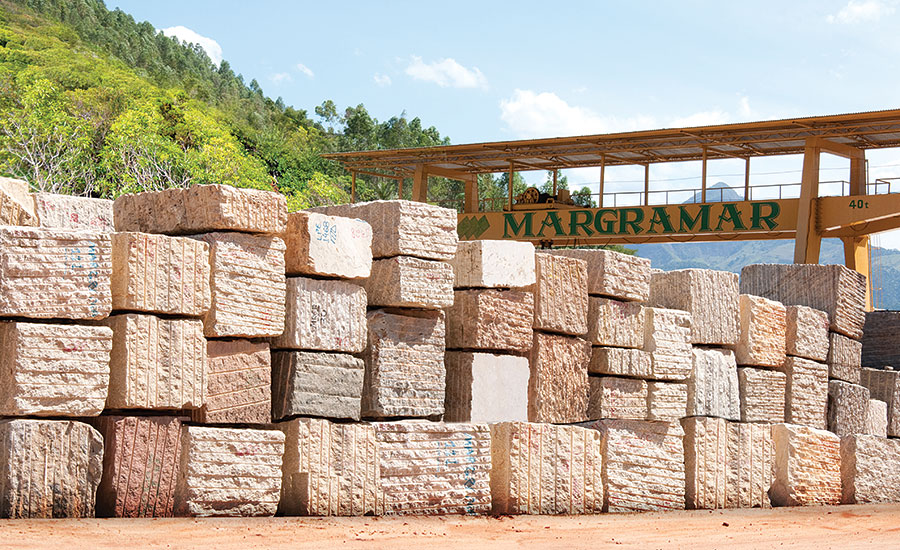Uncovering the Rich Background and Sustainable Practices of Granite Quarrying
As we depend on the precipice of discovering the detailed tapestry of granite quarrying, a trip with time discloses not just the physical act of drawing out rock but likewise the social and historical value woven right into the really textile of this method. From the old origins that laid the foundation for modern quarrying techniques to the sustainable techniques that are shaping the future of this industry, each carve mark on granite surfaces informs a story waiting to be uncovered (granite quarries in south africa). The legacy of granite quarrying extends far beyond plain extraction; it is a testimony to human ingenuity, durability, and the long-lasting appeal of this marvelous stone
Old Origins of Granite Quarrying
Going back to old human beings, the practice of quarrying granite has actually been an essential part of human background and building development. The earliest evidence of granite quarrying go back to ancient Egypt, where substantial pyramids and detailed sculptures were crafted from this long lasting stone. The Egyptians made use of primitive tools to draw out granite blocks from quarries, showcasing the value of this product in their monumental building and constructions.
Progressing in background, the Greeks likewise made considerable payments to the quarrying of granite. The Greeks used granite in different building wonders, such as holy places and statuaries, showing their skill in shaping and sculpting this durable rock. The Romans better improved the strategies of quarrying granite, employing advanced devices like chisels and hammers to remove and form granite for their iconic frameworks.
Via the centuries, the method of quarrying granite has advanced, with modern-day technologies boosting efficiency while keeping the ageless appeal of this all-natural rock - granite quarries in south africa. From old worlds to modern builders, the legacy of granite quarrying continues to form our globe
Evolution of Quarrying Strategies
The evolution of quarrying methods has been noted by a continuous progression towards higher performance and precision in drawing out granite. Early quarrying techniques included hands-on labor with fundamental devices such as blades, hammers, and wedges to extract granite blocks from the earth.
In even more recent times, the arrival of machinery transformed the quarrying market, making it possible for faster extraction rates and boosted efficiency. Technologies such as ruby cable saws, high-pressure water jets, and pneumatic drills have ended up being basic in modern quarries, permitting specific cutting and reduced waste. Additionally, advancements in computer-controlled tools and 3D modeling have maximized quarrying operations, causing very little ecological impact and boosted sustainability methods. As the demand for granite remains to increase, the advancement of quarrying techniques remains indispensable to conference market requires effectively and sustainably.
Social Relevance of Granite
Granite holds a profound cultural significance across numerous worlds due to its long-lasting presence in architectural masterpieces and admired monuments. The cultural importance of granite prolongs past its physical features; it symbolizes resilience, security, and eternity, making it a sign of withstanding heritages and practices.

Sustainable Practices in Quarrying
Among the abundant history of granite quarrying and its social relevance lies a growing emphasis on lasting methods within the sector. As environmental recognition and worries regarding source deficiency have heightened internationally, the quarrying market has actually increasingly accepted lasting techniques to lessen its influence on the atmosphere and surrounding neighborhoods.

In addition, recovery and rehab of quarry sites post-extraction are integral to lasting methods. By restoring quarried areas to an all-natural or valuable state, such as producing wild animals habitats or leisure areas, quarriers can balance out the ecological footprint of their procedures and add favorably to the regional environment.
Tradition of Granite Quarrying
With a historical background steeped in craftsmanship and industrial development, what withstanding influence has granite quarrying left on the landscape of modern culture? The tradition of granite quarrying transcends simple removal methods; it has shaped architectural wonders, city landscapes, and cultural heritage worldwide. The resilient nature of granite has actually made it a preferred option for monoliths, buildings, and facilities, standing as a testament to the skill and virtuosity of quarry employees throughout generations.
Moreover, the economic impact of granite quarrying can not be overlooked. The industry remains to supply job opportunity and drive neighborhood economic climates in areas where granite extraction is prevalent. It has additionally stimulated technological innovations in quarrying techniques and equipment, resulting in extra effective and pop over to these guys sustainable techniques.
In terms of sustainability, the legacy of granite quarrying consists of initiatives to minimize ecological influences through reclamation jobs and accountable resource administration. By balancing financial rate of interests with ecological stewardship, the sector makes every effort to guarantee that future generations can remain to take advantage of this long-lasting all-natural source.
Conclusion
